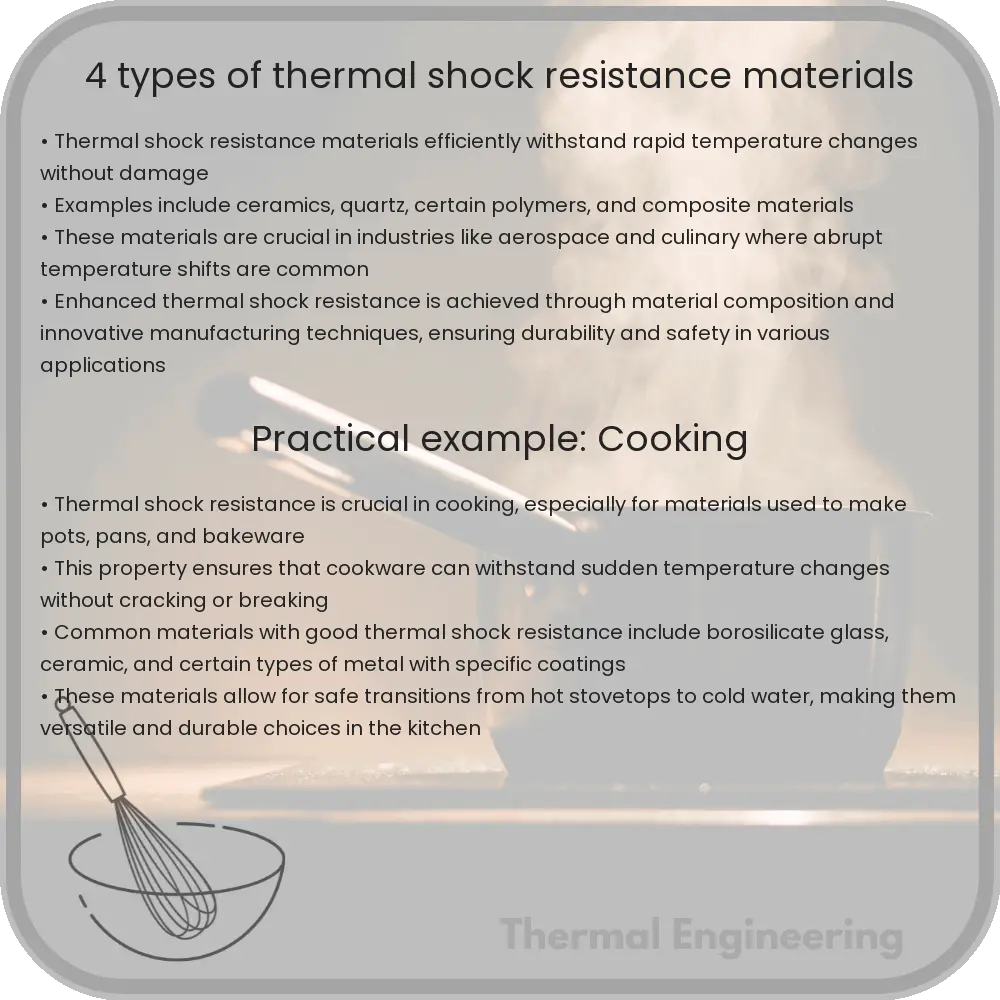Learn about thermal shock resistance, a key property for materials in high-temperature environments like aerospace and cookware.

Understanding Thermal Shock Resistance
Thermal shock resistance is a critical property of materials that need to withstand sudden changes in temperature without deteriorating or failing. Materials with high thermal shock resistance are essential in many engineering applications, from aerospace to culinary industries. This ability is particularly important in applications such as turbine blades, spacecraft shielding, and even in your kitchen’s cookware. Below, we explore four types of materials that exhibit excellent thermal shock resistance.
1. Ceramics
Ceramics are well-known for their thermal shock resistance, although this can vary significantly among different types of ceramics. The key factors contributing to ceramic’s thermal shock resistance include low thermal conductivity, high melting point, and a relatively low coefficient of thermal expansion. Some specific high-performance ceramics include:
- Alumina (Al2O3) – Used in kiln linings and electronic substrates.
- Zirconia (ZrO2) – Known for its strength and durability, used in dental and medical applications.
- Silicon Carbide (SiC) – Commonly used in high-performance car brakes and clutches.
2. Refractory Metals
Refractory metals are characterized by their extraordinarily high melting points, which make them capable of maintaining structural integrity at high temperatures. This group includes:
- Tungsten – Boasting the highest melting point of all metals, it finds use in electrical and heating applications.
- Molybdenum – Utilized in furnace construction, nuclear energy, and aerospace industries for its strength and thermal shock resistance at high temperatures.
3. Composite Materials
Composite materials combine two or more constituent materials with significantly different physical or chemical properties. These composites are designed to have a higher thermal shock resistance than the individual components. A common example is :
- Carbon Fiber Reinforced Polymers (CFRP) – Known for their lightweight and strong characteristics, used extensively in the aerospace and automotive sectors.
4. Quartz Glass
Quartz glass, also known as fused silica, is renowned for its extremely low coefficient of thermal expansion and excellent thermal shock resistance. It’s used in applications where rapid temperature changes occur such as:
- Laboratory glassware
- Semiconductor manufacturing
- Optical applications
In conclusion, materials with high thermal shock resistance are indispensable in environments subjected to extreme and rapid temperature changes. The choice of material depends on the specific application requirements including temperature range, mechanical strength, and environmental compatibility. Understanding these materials helps engineers select the best options for durability and performance in their respective applications.